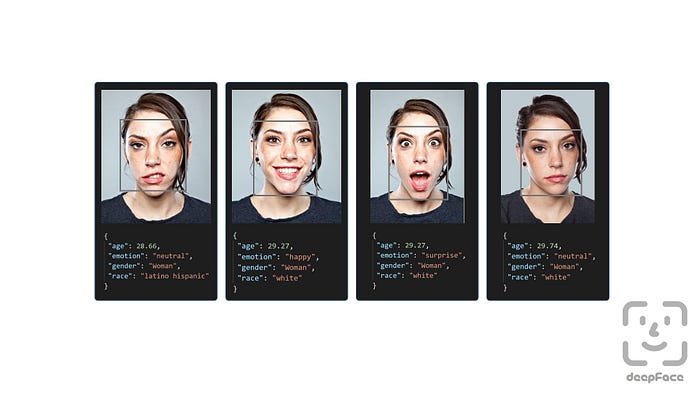DeepFace: A Library for Face Recognition and Facial Analysis

Introduction
DeepFace is a groundbreaking open-source framework developed by Serengil that revolutionizes the field of face analysis. This comprehensive toolkit empowers researchers, developers, and enthusiasts to explore the vast capabilities of deep learning for various face-related tasks. With its user-friendly interface, extensive documentation, and pre-trained models, DeepFace has become a cornerstone for advancing the state-of-the-art in facial recognition, facial attribute analysis, and emotion recognition.
Key Features:
- Face Recognition:
DeepFace excels in identifying and verifying individuals based on their facial features. It utilizes deep learning algorithms to extract distinctive facial representations, enabling accurate face recognition even in challenging conditions such as variations in lighting, pose, and facial expressions. - Facial Attribute Analysis:
DeepFace offers a wide range of facial attribute analysis capabilities, including age estimation, gender classification, race classification, and facial expression recognition. These features are crucial for applications such as demographic analysis, customer segmentation, and emotion detection. - Emotion Recognition:
DeepFace enables the detection and classification of various human emotions from facial expressions. It employs deep learning models to analyze facial landmarks and subtle muscle movements, providing insights into individuals’ emotional states. - Pre-trained Models:
DeepFace comes with a collection of pre-trained models for various tasks, including face recognition, facial attribute analysis, and emotion recognition. These models are fine-tuned on large datasets, offering a convenient starting point for researchers and developers to build upon. - Extensibility and Customization:
DeepFace is designed to be extensible and customizable, allowing users to tailor it to their specific requirements. Researchers can easily integrate their own deep learning models or modify existing ones to address unique challenges in face analysis.
Applications:
- Security and Surveillance:
DeepFace’s face recognition capabilities make it ideal for security and surveillance systems. It can be used for access control, facial authentication, and person identification in public spaces, enhancing security measures and preventing unauthorized access. - Customer Experience and Analytics:
DeepFace’s facial attribute analysis and emotion recognition features find applications in customer experience and analytics. Businesses can leverage these capabilities to understand customer demographics, preferences, and emotions, enabling personalized marketing campaigns and improved customer service. - Healthcare and Medical Imaging:
DeepFace has potential applications in healthcare and medical imaging. It can be used for facial recognition in medical records, assisting in patient identification and diagnosis. Additionally, emotion recognition can be valuable in assessing patients’ emotional states during medical procedures or therapy sessions. - Human-Computer Interaction:
DeepFace’s facial expression recognition capabilities can enhance human-computer interaction. It can be integrated into virtual assistants, chatbots, and other interactive systems to provide more natural and intuitive communication experiences.
Conclusion
DeepFace is a remarkable open-source framework that has revolutionized the field of face analysis. Its comprehensive features, pre-trained models, and extensibility make it an invaluable tool for researchers, developers, and enthusiasts alike. As deep learning continues to advance, DeepFace will undoubtedly play a pivotal role in shaping the future of face-related applications, unlocking new possibilities in security, customer experience, healthcare, and human-computer interaction.
